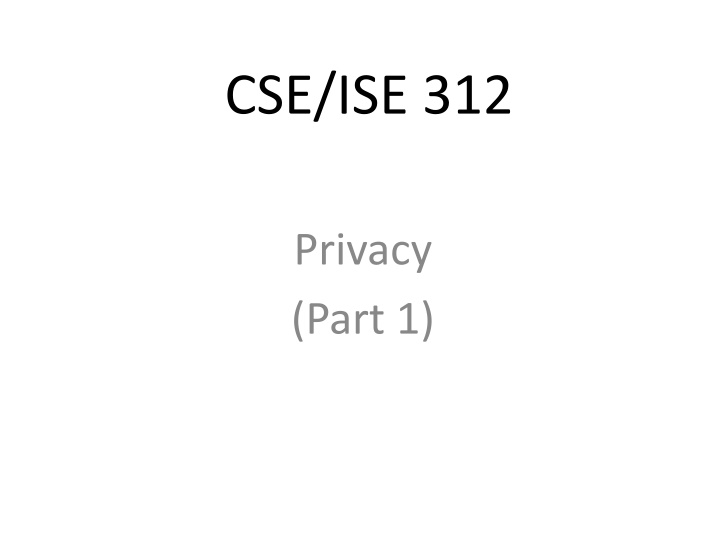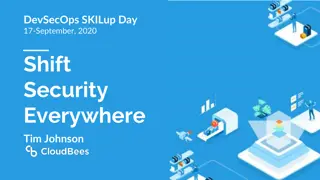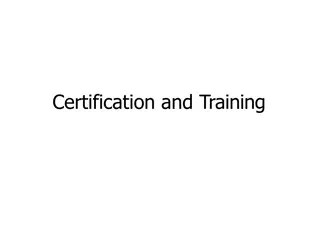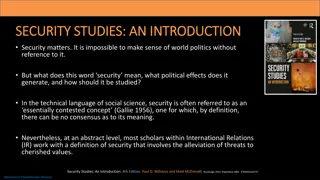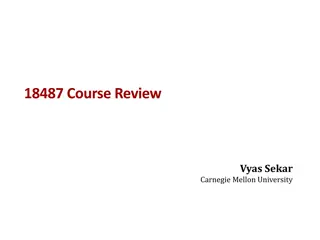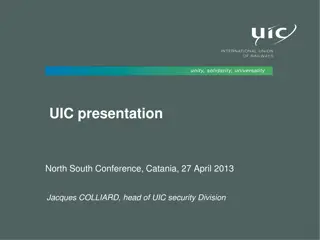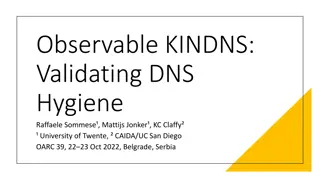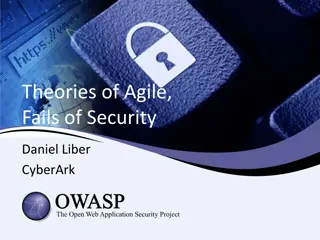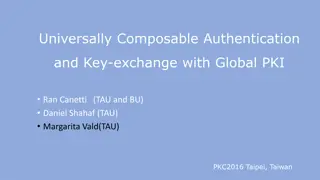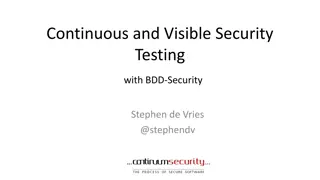Insights into Information Security Practices
Information security, also known as Infosec, is crucial for protecting data from risks. A Principal Security Engineer's role involves health checks, project implementations, and compliance reviews, emphasizing the importance of education and training in the field. Nick Schiano shares his journey into the information security profession, highlighting diverse pathways to this career.
Download Presentation

Please find below an Image/Link to download the presentation.
The content on the website is provided AS IS for your information and personal use only. It may not be sold, licensed, or shared on other websites without obtaining consent from the author.If you encounter any issues during the download, it is possible that the publisher has removed the file from their server.
You are allowed to download the files provided on this website for personal or commercial use, subject to the condition that they are used lawfully. All files are the property of their respective owners.
The content on the website is provided AS IS for your information and personal use only. It may not be sold, licensed, or shared on other websites without obtaining consent from the author.
E N D
Presentation Transcript
CSE/ISE 312 Privacy (Part 1)
What We Will Cover Privacy risks and principles 4thAmendment, expectations, and surveillance Business and social sectors Government systems Protecting Privacy Communications
Privacy Risks and Principles Three Key Aspects of Privacy: Freedom from intrusion - being left alone Control of information about oneself Freedom from surveillance (from being tracked, followed, watched, eavesdropped on)
Privacy Threats Intentional, institutional use Insider access Theft of information Inadvertent leakage Personal actions
Definitions Personal information any information relating to, or traceable to, an individual person Informed consent users being aware of what information is collected and how it is stored Invisible information gathering - collection of personal information about someone without the person s knowledge Cookies - files that a website stores on a visitor s computer
New Technology, New Risks Government and private databases Sophisticated tools for surveillance and data analysis Vulnerability of data Rapid decline in the cost of data storage allows for massive databases Electronic data storage leads to a proliferation of privacy threats
More Examples Search query data Search engines collect many terabytes of data daily Data is analyzed to target ads and develop new services Who gets to see this data? Why should we care? Smartphones Location apps Data sometimes stored and sent without users knowledge
Summary of Privacy Issues (1) Almost everything we do online is recorded Huge amounts of data are stored People are often not aware of collection of personal data Software is complex, not even sure which collects data Leaks happen A collection of many small data items can provide a detailed picture of person s life
Summary of Privacy Issues (2) Re-identification piecing together someone s identity - has become much easier than before Information available on the Internet will be found by people for whom it was not intended Electronic data seems to last forever Data collected for one purpose will find other uses The government sometimes requests personal data We cannot directly protect information about ourselves
Terminology Secondary use - use of personal information for a purpose other than the one it was provided for Data mining - searching and analyzing masses of data to find patterns and develop new information or knowledge Computer matching - combining and comparing information from different databases (using social security number, for example) to match records Computer profiling - analyzing data in computer files to determine characteristics of people most likely to engage in a certain behavior
Stolen and Lost Data Examples: Spyware: software often downloaded from a web site without user knowledge, collecting user data and activity and sends to remote parties Business and government lose customer/citizen information due to weak security Pretexting: pretend to be someone who is legitimate to obtain data. One should be aware and consciously make decisions; IT professionals should endeavor to develop security systems
Principles for Data Collection and Use Informed consent informing people how collected information is being used Opt-in and opt-out policies people specify an exception to the default condition (either to not use information or use information by default) Data retention
Forms of Informed Consent Two common forms for providing informed consent are opt in and opt out: opt in The collector of the information may use information only if person explicitly permits use (usually by checking a box) opt out Person must request (usually by checking a box) that an organization not use information Under an opt in policy, more people are likely to be out Under an opt out policy, more people are likely to be in
Fair Information Principles (FIP) Recommendations from privacy experts 1. Inform people when you collection information, what you collect and how you use it 2. Collect only the data needed 3. Offer opt-outs 4. Keep data only as long as needed 5. Maintain accuracy of data 6. Protect security of data 7. Develop policies for law enforcement requests
The Fourth Amendment Part of the US Bill of Rights The right of the people to be secure in their persons, houses, papers, and effects, against unreasonable searches and seizures, shall not be violated, and no Warrants shall issue, but upon probable cause, supported by Oath or affirmation, and particularly describing the place to be searched, and the persons or things to be seized.
Key Problems Arise from New Tech. The US Constitution sets limits on government s rights to search our homes, businesses, and seize docs and other personal effects. Requires government to provide probable cause. Much of our information today is no longer located in our homes; it resides in huge databases outside our control New technologies allow the government to search our homes without entering them and search our persons from a distance without our knowledge
New Technologies Non-invasive but deeply revealing searches Particle sniffers Imaging systems Location trackers Modern surveillance techniques are redefining expectation of privacy What restrictions should we place on their use? When should we permit government agencies to use them without a search warrant?
Supreme Court Decisions and Expectation of Privacy (1) Supreme court decisions continue to address impact of new tech on 4thAmendment protection Olmstead v. United States (1928) Supreme Court allowed the use of wiretaps on telephone lines without a court order Interpreted the Fourth Amendment to apply only to physical intrusion and only to the search or seizure of material things, not conversations.
Supreme Court Decisions and Expectation of Privacy (2) Katz v United States (1967) Supreme Court reversed its position and ruled that the Fourth Amendment does apply to conversations Court said that the Fourth Amendment protects people, not places. To intrude in a place where reasonable person has a reasonable expectation of privacy requires a court order
Supreme Court Decisions and Expectation of Privacy (3) Kylo v United States (2001) Supreme Court ruled that police could not use thermal-imaging devices to search a home from the outside without a search warrant. Court stated that where government uses a device that is not in general public use, to explore details of the home that would previously have been unknowable without physical intrusion, the surveillance is a search.
Search and Seizure of Computers and Phones The 4thAmendment requires that search warrants be specific about object to search If an officer with a warrant sees evidence of another crime in plain view, the office may seize it How should we interpret plain view for search of computer or smartphone files? Access by law enforcement agents to all data on a computer device can be a serious threat to privacy, liberty, and free speech
Video Surveillance and Face Recognition Security cameras Low accuracy rate may result in detention of many innocent people Abuse by the operators Is the level of surveillance compatible with privacy and a free society? What trade-offs between privacy and security are we willing to make?
